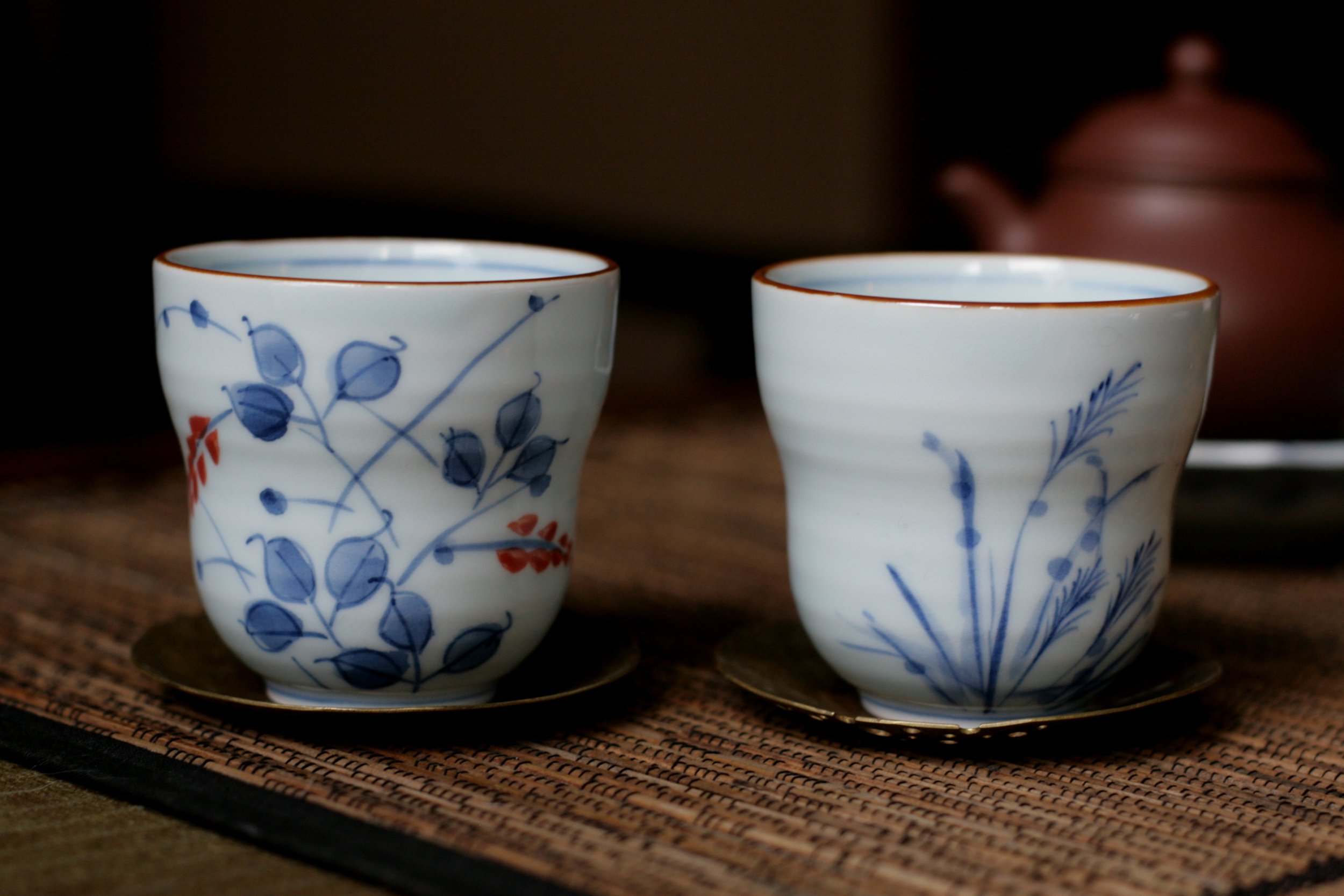 Image 1 of 6
Image 1 of 6

 Image 2 of 6
Image 2 of 6

 Image 3 of 6
Image 3 of 6

 Image 4 of 6
Image 4 of 6

 Image 5 of 6
Image 5 of 6

 Image 6 of 6
Image 6 of 6







Arita yaki gourd shape blue, white, and red painted cup (55)
Arita yaki gourd shaped blue, white, and red painted cup. Vintage iro-e porcelain with individually unique vegetable motifs hand-painted on a gourd shaped body. 7cm x 7cm. Five cups available.
Perfect size for individual up to five person tea service.
Arita yaki is the traditional center for porcelain wares in Japan since the early 17th century. Arita is found in Saga prefecture on the island of Kyushu. Arita yaki is also known as Imari yaki because the porcelain wares were shipped out of the port city of Imari. Porcelain ware production began in China in the 17th century after the discovery of kaolin deposits in Izumiyama near Arita.
Stylistic elements of Arita yaki:
Sometsuke ware – blue and white porcelain ware with blue underglaze painting.
Iro-e – overglaze painting of blue, yellow, red, and green on a white body with transparent underglaze.
Ko-Imari – “old Imari”, a general term traditionally used to indicate Arita porcelain wares made during the Edo period (1603-1868). However, now it seems to indicate anything that is vintage-antique.
Arita yaki gourd shaped blue, white, and red painted cup. Vintage iro-e porcelain with individually unique vegetable motifs hand-painted on a gourd shaped body. 7cm x 7cm. Five cups available.
Perfect size for individual up to five person tea service.
Arita yaki is the traditional center for porcelain wares in Japan since the early 17th century. Arita is found in Saga prefecture on the island of Kyushu. Arita yaki is also known as Imari yaki because the porcelain wares were shipped out of the port city of Imari. Porcelain ware production began in China in the 17th century after the discovery of kaolin deposits in Izumiyama near Arita.
Stylistic elements of Arita yaki:
Sometsuke ware – blue and white porcelain ware with blue underglaze painting.
Iro-e – overglaze painting of blue, yellow, red, and green on a white body with transparent underglaze.
Ko-Imari – “old Imari”, a general term traditionally used to indicate Arita porcelain wares made during the Edo period (1603-1868). However, now it seems to indicate anything that is vintage-antique.